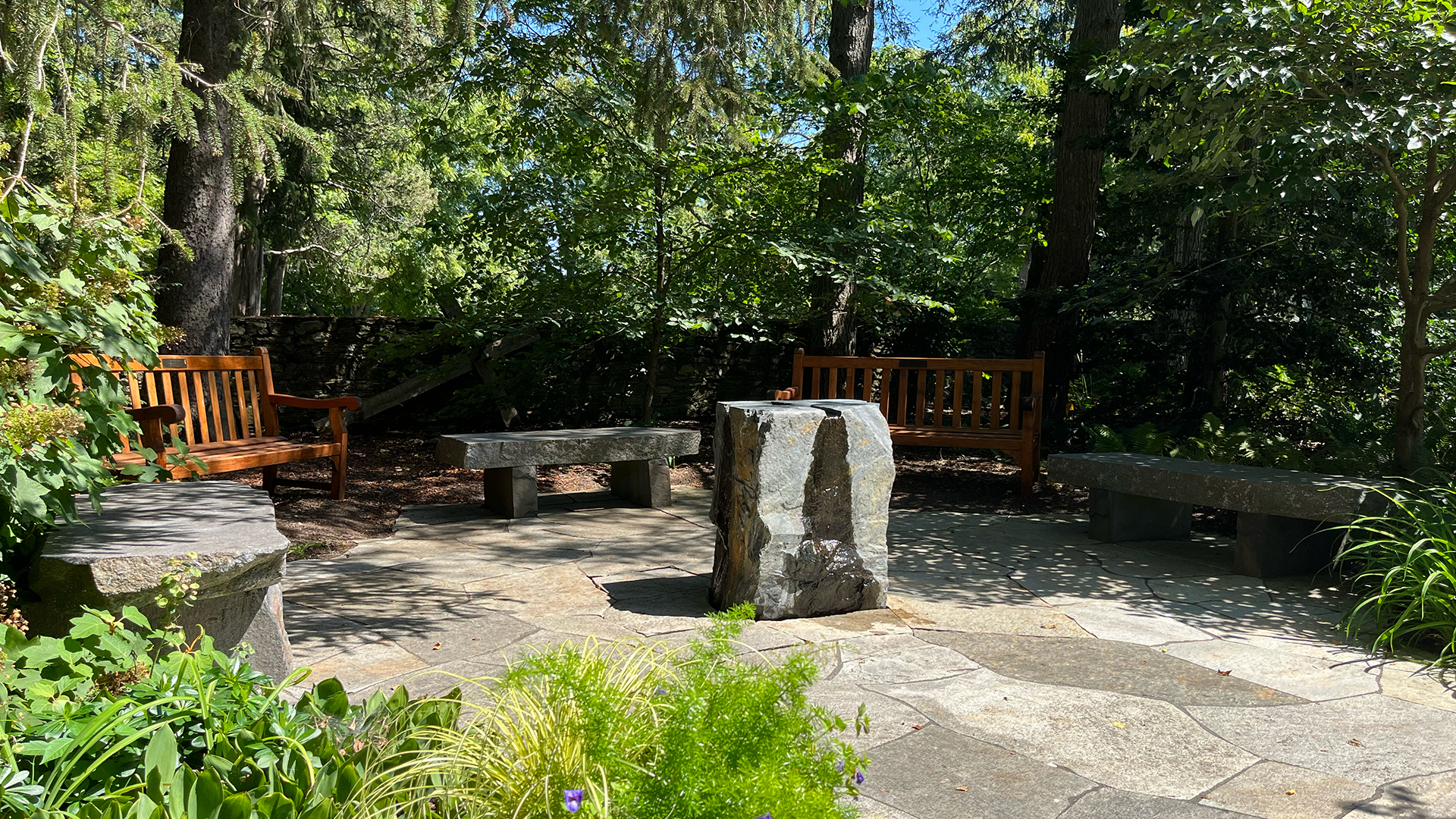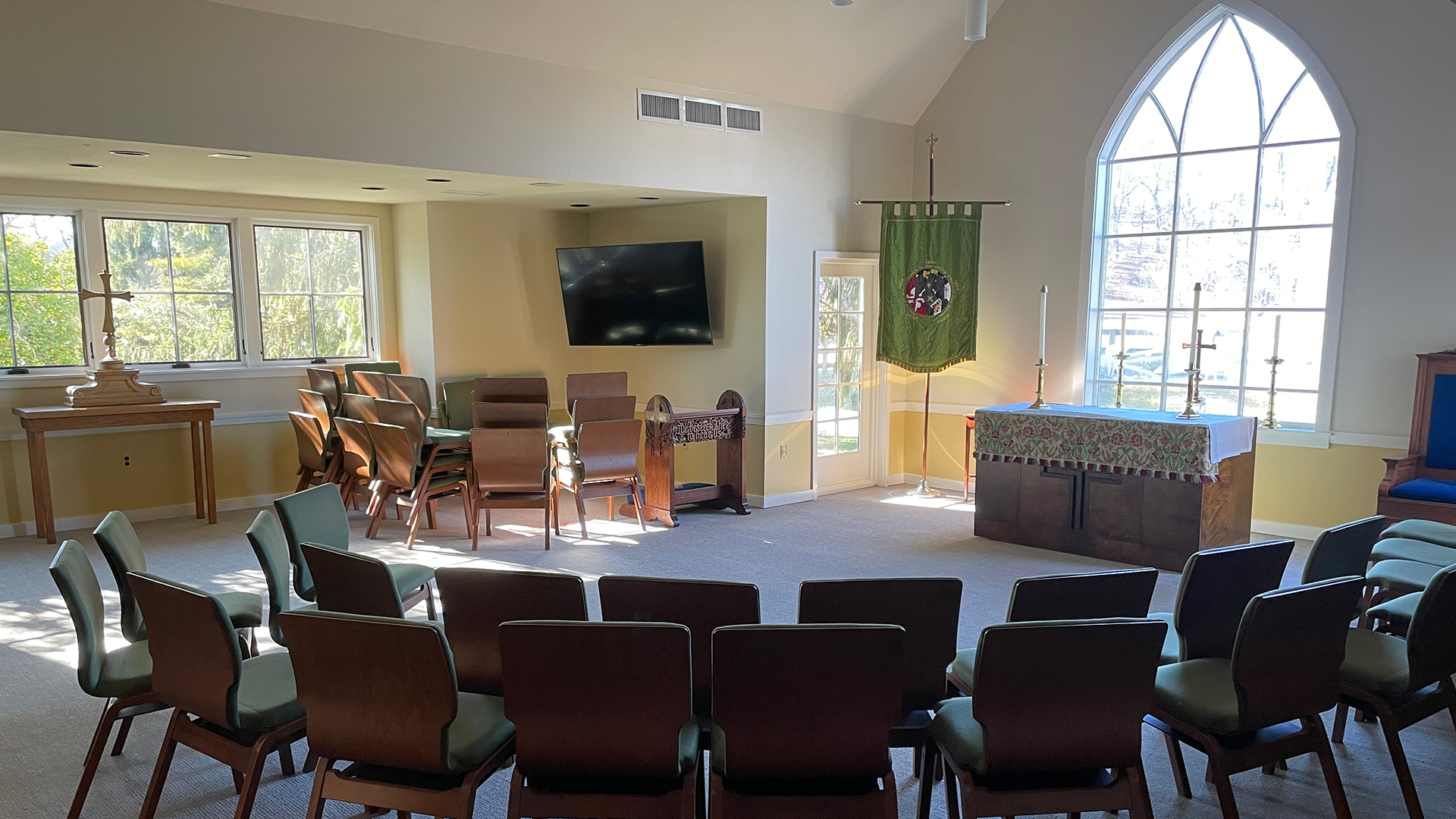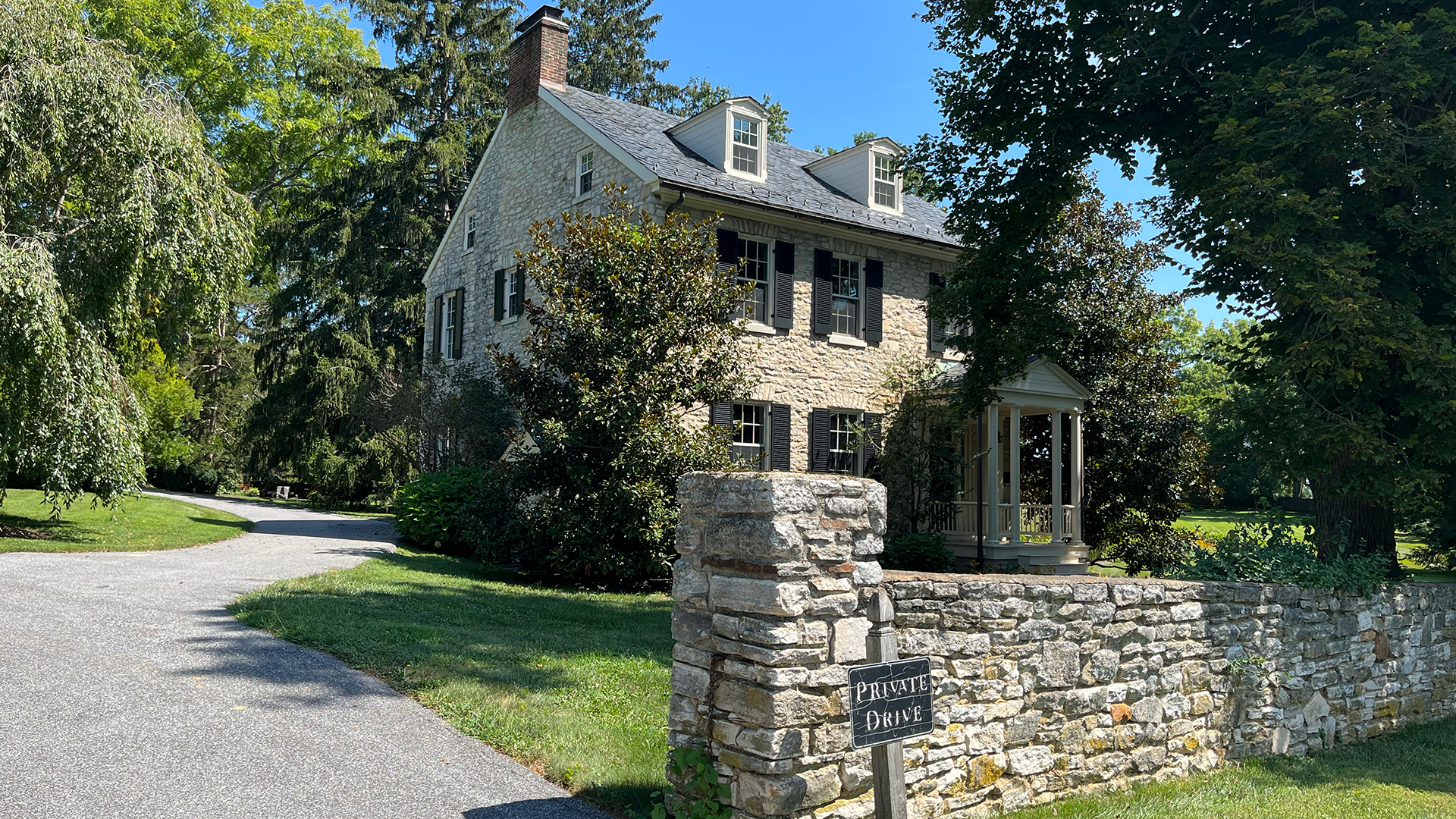A Hidden Gem in Baltimore County
Welcome to St. John’s Church, Western Run Parish. Thank you for visiting our Parish Profile — we look forward to sharing with you our vibrant and thriving community through the information, stories, and photos that appear below.
About Us
An Episcopal church in the Diocese of Maryland, St. John’s is an energetic parish empowered by God’s grace to strengthen our faith and to nurture a Christian community here amongst our neighbors and throughout the world.
In the Gospel of John (1:46-49), Nathaniel asks Philip, “Can any good thing come out of Nazareth?” At the time, Nazareth was thought to be too lowly a place for a prophet. Yet Philip responded, “Come and see.” Then Nathaniel went to Nazareth, where he found Jesus, the Son of God.
At St. John’s Church we, too, are seekers.
We always seek to deepen our faith in God. Through our faith, we seek answers to local and global challenges.
We seek to nurture an active Christian community, both here and abroad.
At St. John’s we believe that discipleship is a participatory process that calls us to do more than read the Bible.
We must seek to live out the lessons of Christ in our daily lives. In this way, we strengthen our faith as individuals, which empowers us to improve our parish community and our world.
We invite you to come and see the beauty and faithfulness of this vibrant parish community.
Christian Formation
Christian education is a vital feature of parish life at St. John’s. We offer many opportunities for our members of all ages to deepen their understanding of our Episcopal faith and inform their journey to the fullness of life in Christ.
Between our Sunday services, parishioners gather to discuss some aspect of our faith. These popular sessions may center on a book the group has read or a topic of interest to our members as they grow in faith. The discussions are led by a cleric or visiting speaker, who often has credentials in theological study and Christian education. No question is out of bounds, and the conversation often includes moments of humor and light-heartedness.
Mission & Outreach
As part of our baptismal covenant to “respect the dignity of every human being,” St. John’s dedicates significant energy and funds toward serving others. We are committed to reach out as partners in ministry with those in need and those serving them, whether they are in the valleys of Baltimore County, in the inner city of Baltimore or in other countries around the world.
HAITI
St. John’s has a deep connection to the people of Haiti. We provide financial support to St. Etienne's Anglican Church and School in the mountains above Leogane, as well as Holy Trinity Music School in Port-au-Prince. Before Covid and the recent unrest in Haiti, the parish would send a contingent of younger parishioners to help teach music and provide other support, such as planting trees and building an internet cafe. We have also been blessed to have the choir of Holy Trinity Music School visit St. John’s and accompany our Sunday worship.
Paul's Place
We have an historic and ongoing relationship with Paul’s Place, Baltimore, which a previous rector and parishioner helped to found. The organization provides hot lunch, an emergency food pantry, a computer lab, a health and wellness clinic, clothing, and workforce development. St. John’s supports Paul’s place with regular donations and hands-on assistance through volunteer work.
The samaritan community
We support The Samaritan Community, which provides assistance and support in the Baltimore neighborhood of Bolton Hill to those in crisis who wish to improve their lives. This work is done through a food pantry, clothing and household goods shop, individual and group counseling and other services.
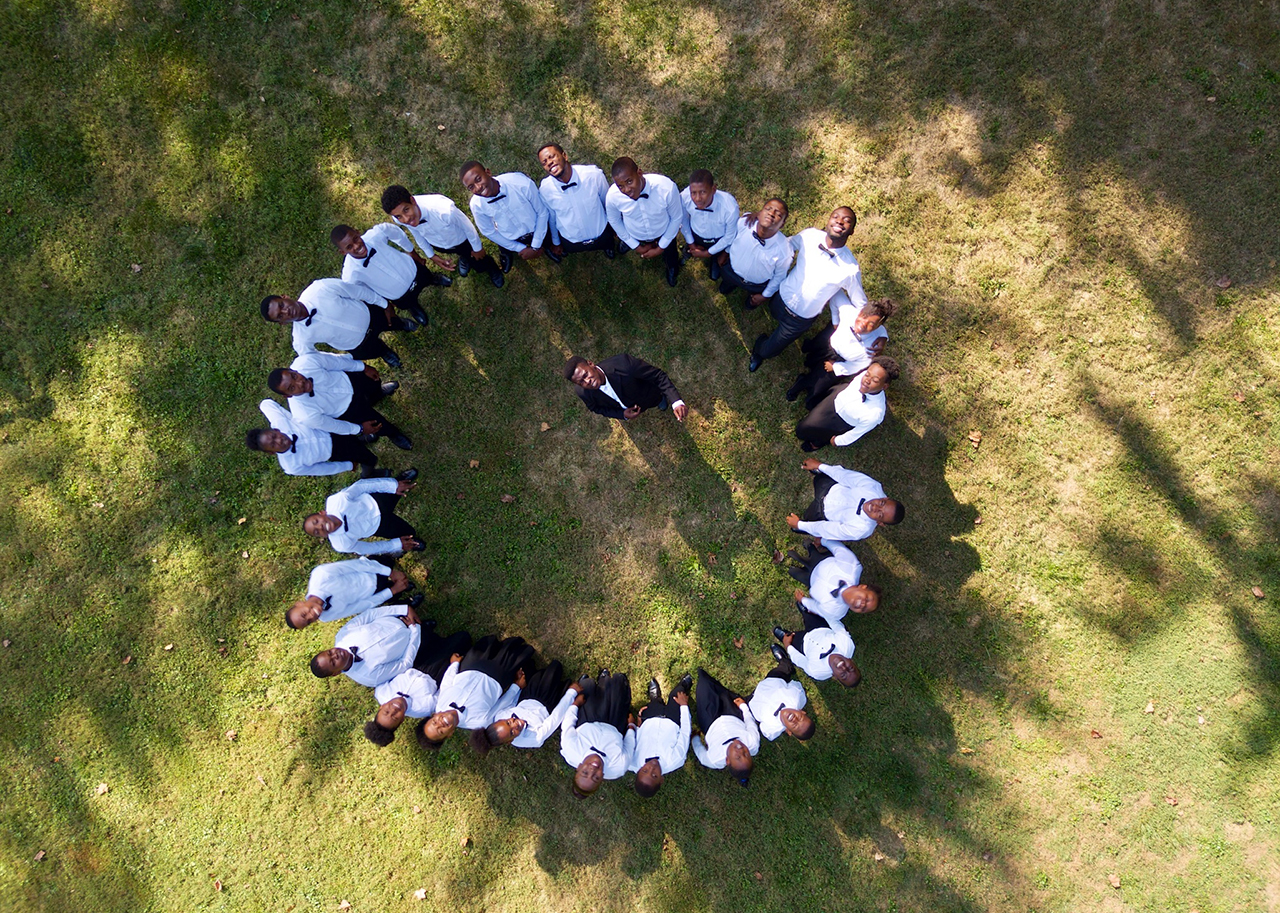
United Churches assistance network (UCAN)
Another important part of our mission is supporting the United Churches Assistance Network (UCAN) in Northern Baltimore County. UCAN is an emergency-assistance cooperative that offers financial and referral help to community members in need, often preventing evictions and utility turn-offs.
Episcopal Refugee and Immigrant Center Alliance (ERICA)
The most recent addition to our mission work has been in partnership with ERICA (Episcopal Refugee and Immigrant Center Alliance). We have taken in a young husband and wife who escaped from Afghanistan in a harrowing journey. They currently reside on the property of one of our parishioners, and we are helping them settle in the U.S. by providing whatever we can to support them in their journey.
In addition to these ongoing relationships, we have provided numerous other organizations with financial help where we have seen a need, including Reach High Baltimore, Lutheran World Relief -Ukraine, Center for Hope, HIPS-DC, The Samaritan Women, and others.
Music

Music is an extremely important aspect of worship and community life. St. John’s is blessed with a choir of four professionally trained singers. Under the leadership of our Music Director, this ensemble performs inspiring choral pieces from a broad range of liturgical traditions. Choral services include the 10 a.m. Sunday service, occasional evensongs, and liturgies for Christmas and Holy Week. At any of these services, worshippers are just as likely to hear spirituals and original compositions as they are the works of Tallis, Howells, and other English composers. In addition to anthems and motets, the choir regularly sings Anglican chant, hymn arrangements with descants, and special service music. When the occasion calls for it, additional singers and instrumentalists are brought in to enhance the musical offering.
In an effort toward racial reconciliation, the St. John’s music program makes an annual contribution to the Diocese of Maryland’s Reparations Initiative to fund disparity-reducing, racial equity projects in impoverished Black and African American communities across Maryland. The amount of the St. John’s music program contribution is greater than the amount paid for a general music license to use the hymns in the Hymnal 1982.
Worship
At St. John’s, gladness reigns because the Gospel is preached. From the pulpit we hear week in and week out of God’s faithfulnes, first to Israel, then to all of humanity to rescue us from sin and death and everything that weighs us down—loneliness, fear, despair, isolation, and the struggles of daily life. Our faces light up to see each other, to pray together, to worship and break bread together, to sing and hear the good news that God is faithful to us and all creation. We are humbled and joyful to be a covenant people, heirs to Abraham because of the messiah Jesus, who obediently gave himself for us on the cross, rose to new life and empowers us with the Holy Spirit. Grateful to God, we strive to open our hearts and hands to help mend a broken world.
ALTAR GUILD
With a large contingent of volunteers, our altar guild prepares the church for Sunday services and proper liturgies, as well as weddings, funerals, and other special services. Their handiwork is second to none and beautifies the altar as the focal point of our worship. The altar flowers are often donated by parishioners in honor or memory of a loved one.
USHERS, LECTORS, AND LAY MINSTERS
With the guidance of the Worship Committee, our ushers, lay readers, and lay Eucharistic ministers support the services at St. John’s in indispensable ways. Like any busy parish, we rely on these dedicated volunteers to make visitors feel welcome, to proclaim the Word, and to help administer the sacraments.
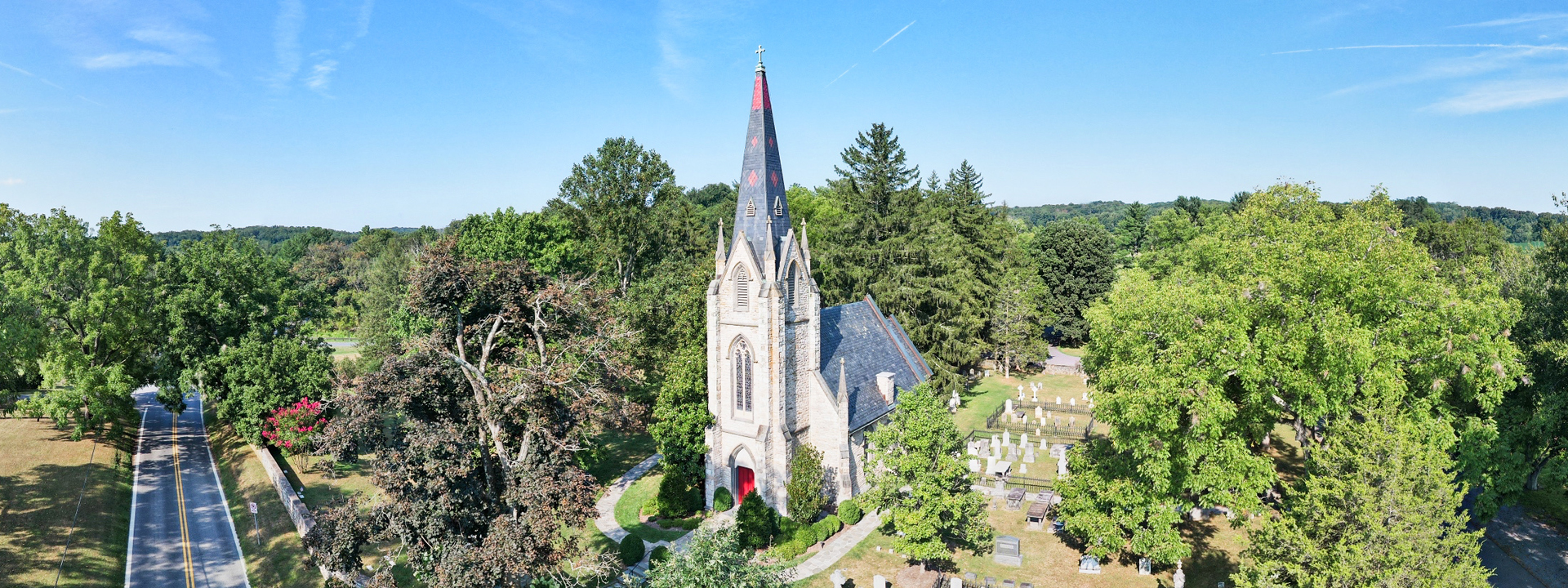
Facilities
A unique characteristic of St. John’s is its exquisite buildings and grounds. Set on just over 11 acres in a rural part of Baltimore County, the church grounds are often cited as a draw for parishioners, many of whom note feeling closest to God in nature, and especially on the grounds of the church. During the recent pandemic, the lawn around the church became the location for outdoor services and activities, providing vital continuity and comfort.
The heart of the campus is the Gothic revival stone church topped by a 100-foot spire. The original church was built in 1815 and reconstructed in 1869 after a tragic fire on Christmas Day. The interior is noted for its scissor arches, stained-glass windows depicting the Gospel of St. John, and beautiful wood carvings. The church has undergone numerous renovations, notably in the 1920s and again after the completion of the $5 million Cornerstone Campaign in 2016. The church’s renowned music program is anchored by its Taylor & Boody tracker organ.
A short stroll from the church takes visitors past a small contemplative fountain where the 8 a.m. Eucharist is frequently held in warmer months, and on to the Parish House, an important location for hospitality and parish gatherings, but also open to the community. Completely reconstructed in 2003, the Parish House comprises the church offices, a library, multiple classrooms, a chapel with a lovely etched glass window, and a large hall, which has been the scene of everything from Music in the Valley chamber concerts to memorial service luncheons, AA meetings, church celebrations, and the St. John’s annual meeting.
The recently renovated rectory was built in 1842, and today is the oldest rectory in the Diocese of Maryland still used for its original purpose. The rector’s home was made more glorious with the addition of the rector’s garden, well tended by a professional gardener. Campus amenities also include a playground and grassy play lawn enclosed by a fence for the safety of the youngest members of the congregation. The entire grounds are embraced by a stone wall punctuated by a lychgate.
Community
When we asked our parishioners what was most important to them in the next rector, the third most common response (42.7 percent of responses) was a sense of humor. St. John’s takes its mission as a Christ-centered community very seriously, but we do not take ourselves too seriously.
From laughing at minor gaffes from the pulpit, carving and displaying pumpkins on the stone wall every Halloween—and encouraging congregants to arrive at church in costume—and embracing the more creative arrangements of the choirmaster (the Te Deum Laudamus set to Queen’s “Bohemian Rhapsody” is now a favorite of the repertoire), this is a congregation that prizes its history and traditions but also appreciates a certain level of informality.
Hospitality is an important part of the St. John’s identity, with coffee hour playing an integral role in Sunday worship, allowing for intergenerational socializing and the creation of lasting relationships. More than 70 percent of respondents to the recent parish survey state they have close friends in the congregation. That hospitality extends outside the church walls, with congregants opening their homes to visiting Haitian musicians, participating in interfaith outreach events, and welcoming the community at large with refreshments at the annual Thanksgiving Day Blessing of the Hounds.
The same parish survey revealed that the congregation of St. John’s is almost equally divided between men and women (no participants responded “other”), with the majority (63 percent) having been members for more than 10 years. Although 74 percent of respondents are married and 51 percent attend church with a partner, the vast majority have grown children who do not attend church. An educated congregation, 25 percent have a bachelor’s degree and more than 60 percent have an advanced degree. A highly engaged congregation, just nine percent of those polled said they had never participated in a special event at St. John’s, such as the Blessing of the Hounds, adult forums, or yoga therapy. Just 11 percent reported never having participated in parish leadership as a vestry member, usher, lay minister, or other committee member.
Though St. John’s sits in the rural Worthington Valley, it is part of the larger community of Reisterstown that, as of 2020, had a population of 27,800 people with a median age of 39 and a median household income of $71,851. There are nine public elementary schools, four middle schools, and two high schools serving the Reisterstown area, as well as a robust offering of parochial and private schools. The church is also close to Hunt Valley, an industrial center that is the location of global headquarters of the spice company McCormick, among many others and home to a large retail center. From the State Fair to wineries, golf courses to horse racecourses, classical concerts to kayaking, Baltimore County is a dynamic location with many things to see and do. The heart of Baltimore City is just a 30-minute drive away.
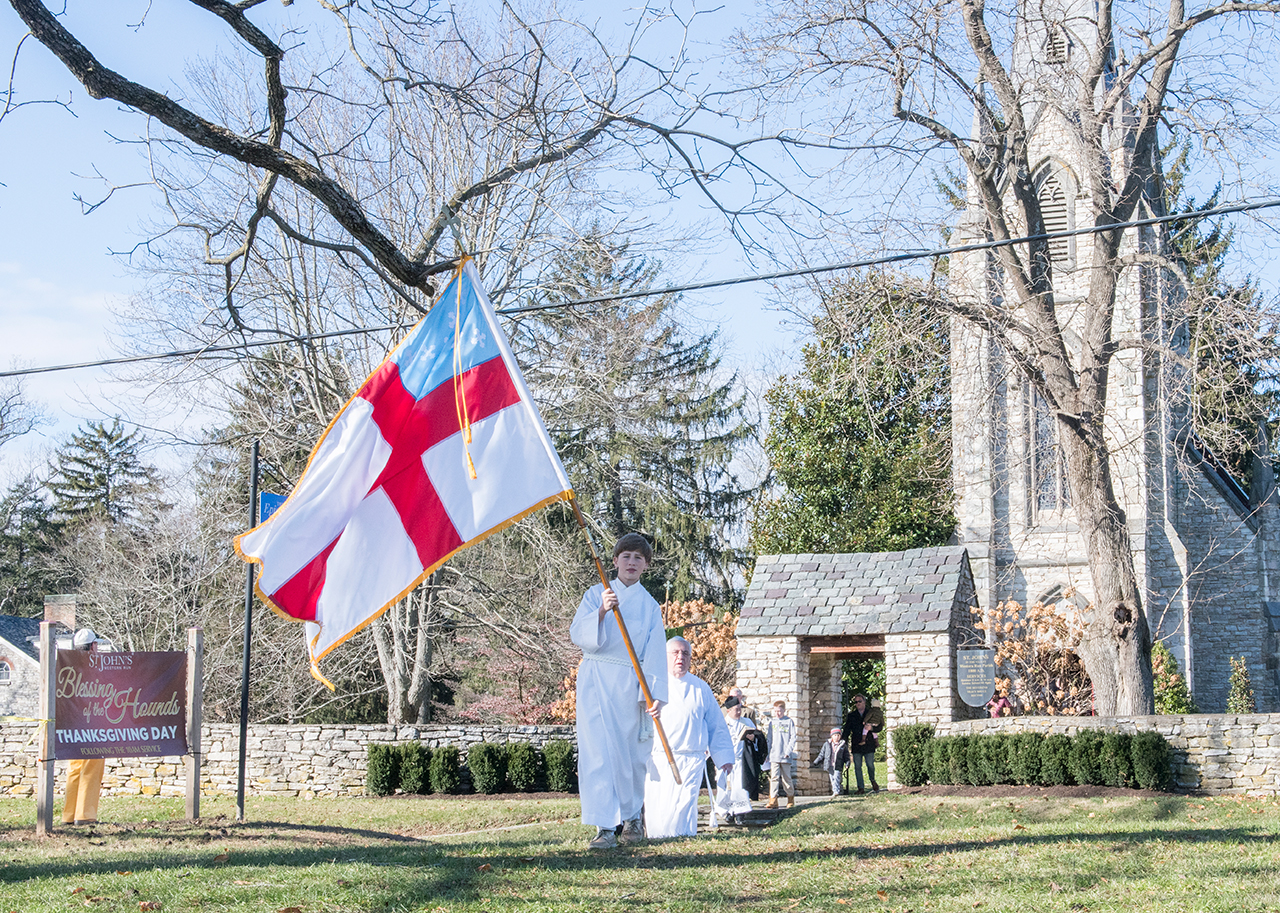


How satisfied are you with Sunday services?
89 responses
Very Satisfied 76.4%
Generally Satisfied 22.5%
Generally Unsatisfied
Very Unsatisfied
Do you have a strong sense of belonging at St. John's?
89 responses
Yes 80.9%
No 19.1%

